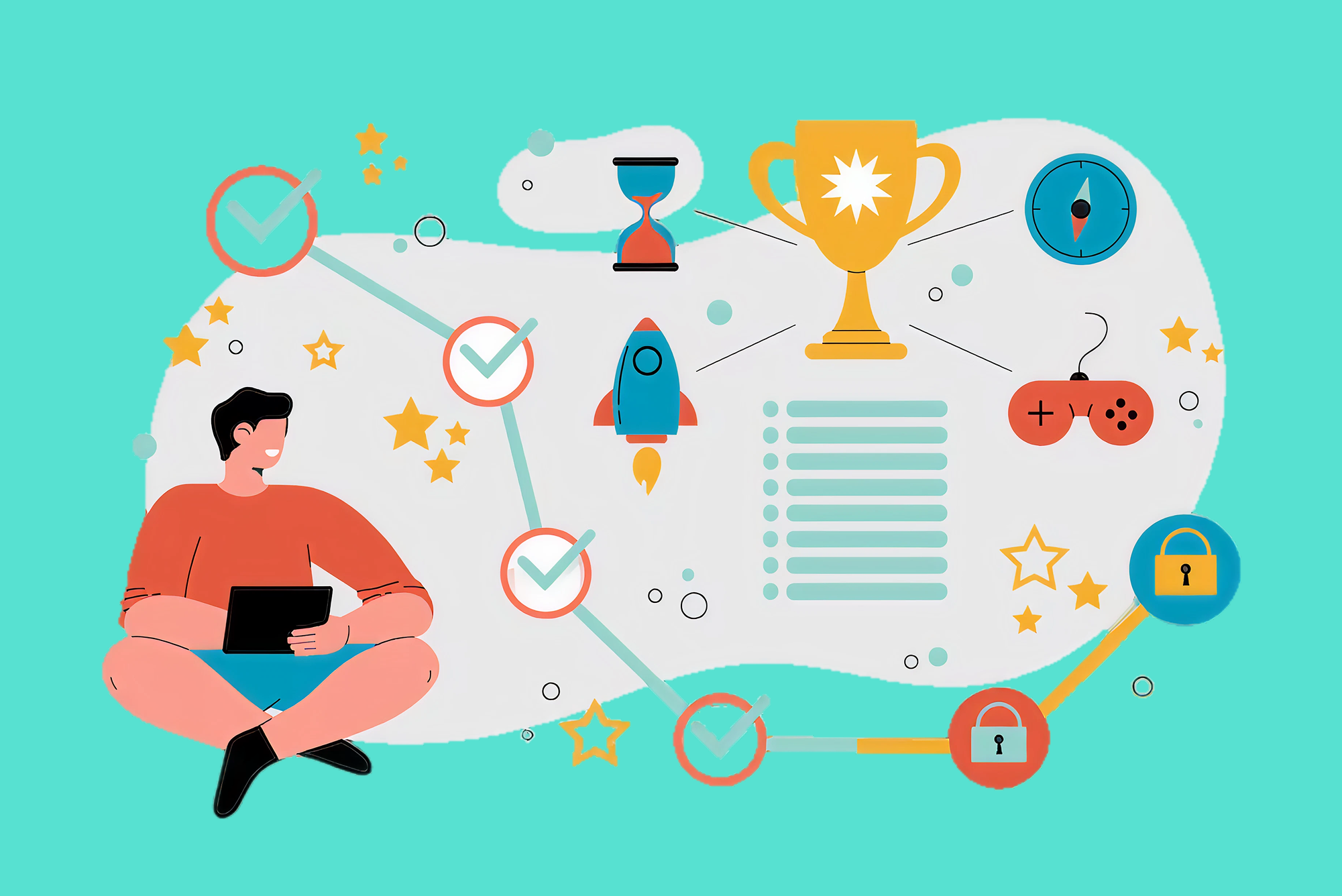UX Gamification: How to Make Your Product More Addictive (In a Good Way)

Introduction
We live in an era of digital distractions, with countless apps and products vying for a few seconds of user attention. In this hyper-competitive space, making your product engaging—dare we say, addictive—is not just smart, it’s essential. That’s where UX gamification comes in.
Gamification doesn’t mean turning your app into a video game. It means strategically applying game-like mechanics—like points, rewards, progress bars, and competition—to make user experiences more compelling. When done right, it transforms mundane tasks into satisfying journeys, increasing retention, motivation, and joy.
In this detailed guide, we'll explore the principles, psychology, patterns, and pitfalls of gamification in UX. Let's level up!
What is UX Gamification?
Gamification in UX is the integration of game mechanics into non-game environments, such as websites, apps, and services, to engage users and drive desired behaviours.
It leverages core psychological triggers like reward, achievement, competition, and progress to:
- Boost user motivation
- Drive engagement and retention
- Create emotional connections
Real-World Examples:
- Duolingo: Streaks, badges, leaderboards, and level progression
- Nike Run Club: Challenges, trophies, and shareable achievements
- LinkedIn: Profile completeness progress bar and endorsements
The Psychology Behind Gamification
Effective gamification taps into intrinsic and extrinsic motivators. Here's how:
🔹 Intrinsic Motivation
- Autonomy: Giving users control (e.g., choosing paths or customizing avatars)
- Mastery: Helping users improve through challenges
- Purpose: Connecting actions to meaningful goals (e.g., learning a new language)
🔹 Extrinsic Motivation
- Rewards: Points, badges, discounts
- Recognition: Leaderboards, status levels
- Social Validation: Likes, shares, community rankings
Psychologist B.J. Fogg’s Behavior Model suggests behavior occurs when motivation, ability, and a trigger converge. Gamification helps optimize all three.
Core Elements of UX Gamification
1. Points
Track progress or value. Can be symbolic (XP) or real (credits).
Example: Fitness apps that give points for daily activity.
2. Badges & Achievements
Reward milestones to provide a sense of accomplishment.
Tip: Make badges visible and sharable to increase value.
3. Progress Bars & Streaks
Visual indicators of progress create urgency and satisfaction.
Example: Duolingo’s daily streak builds habit loops.
4. Levels & Challenges
Introduce structured learning or experience paths.
Tip: Add increasing difficulty to maintain interest.
5. Leaderboards
Appeal to users’ competitive nature.
Use wisely: May demotivate if users always rank low.
6. Virtual Goods & Unlockables
Provide exclusive content or features based on achievements.
Example: Unlock premium templates, avatars, or themes.
7. Time-Based Events
Introduce time-sensitive goals to create FOMO.
Example: Limited-time challenges or flash sales.
Best Practices for UX Gamification
1. Align with User Goals
Don’t gamify for the sake of it. Understand what users want to achieve and enhance that journey.
2. Make Rewards Meaningful
Badges that sit in a corner unused don’t inspire. Rewards should have perceived value—functional, social, or emotional.
3. Start Simple, Then Scale
Begin with one mechanic (like a progress bar) and add more as needed. Over-gamification overwhelms users.
4. Encourage Social Connection
Let users collaborate, compete, or celebrate wins together. Social validation increases motivation.
5. Use Data to Personalize
Tailor challenges and feedback based on behavior. Adaptive gamification feels more relevant and rewarding.
6. Provide Feedback Loops
Show users the impact of their actions immediately. It builds trust and encourages repetition.
7. Avoid Dark Patterns
Don’t manipulate users into compulsive behavior. Focus on long-term engagement over short-term metrics.
Gamification Pitfalls to Avoid
1. Overuse of Extrinsic Rewards
Relying too heavily on points and prizes can reduce intrinsic motivation over time (a.k.a. the Overjustification Effect).
2. Ignoring User Frustration
If challenges feel too hard or too easy, users drop off. Balance is critical.
3. Making It One-Size-Fits-All
Gamification should adapt to user preferences. Offer opt-outs or alternatives.
4. Treating All Users the Same
A novice and a power user should see different levels of challenge and reward.
When to Use Gamification
Gamification is most effective in:
- Habit formation (e.g., fitness, language learning)
- Education (e.g., e-learning, onboarding)
- Community building (e.g., forums, social networks)
- Productivity and goal tracking (e.g., journaling, habit apps)
UX Gamification Framework (SCORE)
Use this framework to design your gamified UX strategy:
- S: Start with the user’s goals
- C: Choose appropriate game mechanics
- O: Offer meaningful rewards
- R: Reinforce actions with feedback
- E: Evaluate and iterate with data
Tools & Libraries for Gamification
- Gamewheel, BadgeOS, Kahoot! for game logic
- Lottie, Framer Motion for animations
- Mixpanel, Amplitude for behavior analytics
Conclusion
UX gamification is more than points and badges—it’s about creating emotional engagement. By understanding what motivates your users and designing with purpose, you can transform passive experiences into addictive (in a good way) journeys that delight, retain, and grow your user base.
As always, start small, test constantly, and design ethically.